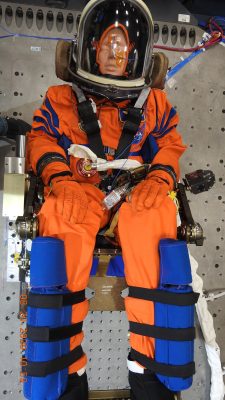ARTEMIS II: MISSION TO THE MOON
Hi, I’m Marley, the astronomer here at the Space Centre. This month, we are focusing on humanity’s return to the Moon! With the conclusion of Artemis I, we can begin to look ahead at Artemis II: the first crewed Artemis mission.
To prepare for Artemis II, we will use what we learned from Artemis I. On December 30th, 2022, the Orion spacecraft from the Artemis I mission returned to NASA’s Kennedy Space Centre after it left Earth on December 16th, 2022. The Orion spacecraft is where the crew of Artemis missions will be during their time in space. It is important that we know what those astronauts might experience, so that we can ensure their safety during their voyage and their stay up there. Scientists can gather information from the Orion capsule itself, but they can also analyze the results from some interesting payloads that hitched a ride on Artemis I.
These payloads include the manikins Commander Moonikin Campos, Helga and Zohar. All three manikins were equipped with radiation detectors. Zohar wore a radiation protection vest, and Moonikin Campos wore an Orion Crew Survival System suit. This is the first generation version of the spacesuit astronauts will wear during the launch and entry phases of their missions. Results from these detectors will tell scientists the radiation risk astronauts will face during their mission.
The Orion capsule itself will also provide data on what the crew members can expect. Accelerometers were put inside Orion to gather data about vibrations and accelerations throughout the spacecraft. The journey to the Moon is not an easy one. During ascent, astronauts can expect to experience approximately 2.5 times the force of gravity. The astronauts would feel 2.5 times the force of gravity pulling them back towards the Earth. Coming home has the potential to generate four times the force of gravity at two different points! All information from the Orion will go towards research on how scientists and engineers can safely send and bring back the astronauts under these conditions, which some of the information they learned will be applied to crew simulations.
The crew of Artemis II will have a mission length of about 10 days. In those 10 days, the crew members will test and confirm that all of Orion’s systems are working as they should be with actual people on board. Who the crew will be is something that we will learn very soon!
Planned for a launch in May of 2024, Artemis II will be a crew of four. One of these crew members will be a Canadian astronaut. Canada was awarded a seat on Artemis II in exchange for our contribution to the Lunar Gateway: the Canadarm3. Which Canadian astronaut will get the seat has not been announced at the time of writing. There are currently four active Canadian astronauts: David Saint-Jaqcues, Jeremy Hansen, Jennifer Sidey-Gibbons, and Joshua Kutryk. One of them will join three NASA astronauts on Artemis II, and will be the first Canadian astronaut to travel around the Moon!
Just like we are using the results of Artemis I to prepare for Artemis II, what we learn from Artemis II will help us prepare for Artemis III: when humans set foot on the Moon again. That mission is slated for 2025, and we have a lot of exciting science to look forward to before then. Try out some of these Moon related activities below.

Astronomer’s playlist
Time
Activity
60 mins
We still have many questions about the Moon, one of them being ‘How did our Moon form?’ In this activity, you can learn more about the leading theory we have that explains how Earth got its Moon, and create your own comic strip or flip book telling the story.
Ask yourself: What evidence do we have to support the Giant-impact hypothesis?
60 mins
Have you ever noticed all of the different features on the surface of the Moon? The next time you find yourself looking at the Moon, try out this activity to help you identify what you are seeing. You can even try to find the regions where the astronauts from the Apollo mission walked!
Ask yourself: Where do you think the astronauts of Artemis III will explore?
60 mins
Commander Moonikin Campos and the other manikins will help scientists better ensure crew safety. If you want to see what their journey looked like, check out these comics!
Ask yourself: What challenges might the crew of Artemis II face?
–
The seat Canada gets on Artemis II is because of our robotic contribution to the Lunar Gateway in the form of Candarm3. If you want to know more about the Gateway, check out this blog post. and try some of those activities!

